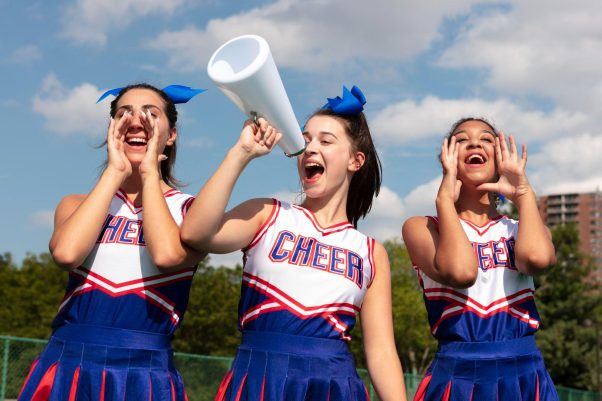
How Music and Sports Blends in 2025: Anthems, Playlists, and Fan Motivation
At first glance, music and sport might seem like separate languages. The one is made of sound, the other – of movement. Yet they share the same pulse. The whistle before kickoff. The drumbeat of sneakers on wood. The chants swelling from stands. All this is part of a rhythm older than any anthem. Across continents, the bond between music and sport is both ritual and fuel. It is a way to unite, to prepare, and to believe.

Most Popular Songs and Anthems at Sporting Events
In 2025, the playlist of global sport is as eclectic as the fans who fill its arenas. Some songs never leave the stage: Queen’s We Will Rock You still thunders through stadiums from Accra to Buenos Aires, while Survivor’s Eye of the Tiger finds new life each tournament. In the Premier League, in-stadium DJs like Liverpool’s George Sephton turn music into a second commentary, punctuating each goal by a signature riff.
Global crossovers are now routine. Burna Boy co-headlined the 2023 UEFA Champions League Final kick-off show, signaling Afrobeats’ rise at elite football events. Latin artists like Bad Bunny have made similar inroads, with tracks heard across match highlights and fan montages. Even the Paris 2024 Olympics experimented with orchestral-electronic fusions, blending traditional French motifs with modern global sounds. It was a deep nod to how sport now mirrors the world’s playlists.
The anthems no longer belong solely to nations. They belong to people united not by motherland but by moods experienced. There are ones of determination, ones of defiance, and ones of joy. For a player on the pitch or a bettor watching the odds, the right sound can steady the pulse or push it to the brink.
Playlists for Workouts and Athlete Motivation
Professional athletes increasingly treat playlists as part of performance strategy. Recent research shows tempo-matched music can reduce perceived exertion and support endurance while timing (pre-task vs in-task) also matters. This helps explain why boxers, runners, and footballers curate specific rhythms for pre-match rituals.
Athletes across leagues now publicly share warm-up mixes and pregame playlists on streaming platforms. Tracks from Drake, Tems, and Kendrick Lamar dominate, alongside motivational classics like Eminem’s Lose Yourself. These are the real tools for focus.
For fans too, music shapes participation. Gyms and home workouts depend on rhythm to sustain effort. Many sports bettors, before watching live streams, use curated soundtracks to create atmosphere, thus creating a kind of self-made stadium energy. It’s easy now to sync pre-game tension with live data feeds and match analysis through integrated apps. On one of the best of them, you can create MelBet account to follow or bet on matches while immersed in the moment. The merging of sound and sport has become a sensory experience, in which rhythm meeting risk, and focus meeting excitement.
Analytics: How Music Affects Fan Engagement and Mood
Sports marketing has added music a great value. Now it’s all about finding patterns that keep fans emotionally engaged. Clubs use analytics to refine stadium playlists. When an upbeat track follows a goal, crowd noise and participation rise measurably. Slower songs tend to soften the mood and extend applause. Music has become an active ingredient on the tribunes.
This applies to digital fandom too. Livestreaming platforms turn every penalty save into a micro-video with trending tracks in hope for virality. Music defines shareability.The fan’s playlist is no longer passive, it’s participatory data, part of the spectacle itself.
And as betting and streaming communities merge, users often associate specific songs with teams, creating spontaneous online chants that echo across time zones. If you’re looking for an online hub where you can find all that and even more, visit melbet.
Forecast: Upcoming Music Trends at Major Sports Events
Looking ahead, three patterns stand out.
First, continental and national events are highlighting local sounds. The African Games held in Accra in 2024 featured performances by Ebo Taylor, Pat Thomas, Shatta Wale, King Promise, and Kamo Mphela. It’s a clear sign that future ceremonies will continue blending heritage and contemporary pop rather than outsourcing their soundtracks.
Second, localized remixes are replacing uniform anthems. Expect to hear stadium versions of hits like Calm Down or Jerusalema adapted by fan DJs and club collectives. FIFA’s “Sound” initiative for the 2026 World Cup will build on this, commissioning city-specific remixes of the tournament theme.
Third, immersive audio and large-format sound upgrades are spreading across modern arenas. 2026 World Cup host cities are investing in spatial audio systems to heighten fan immersion, aiming at replicating the movement of chants and waves of applause across the stands.
These changes point to something deep. Sport is not simply watched but felt, and music is the unseen hand shaping that feeling. The same pulse that carries a sprinter down the lane or a goalkeeper through penalty tension now carries through digital networks, playlists, and betting dashboards alike.
A Quiet Coda
When the crowd hums an anthem together, individuality dissolves into something collective, almost sacred. In that moment, sport stops being competition and becomes communion. The same melody might be playing in a café in Lagos, a bar in Marseille, or through headphones before a late-night wager in Johannesburg.
Music keeps score in ways numbers cannot. It remembers who we were when we believed in the outcome. And who we might be when the next chorus begins.
